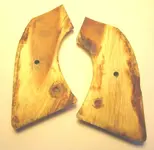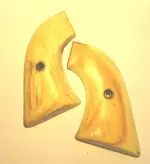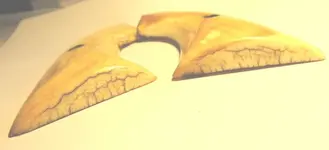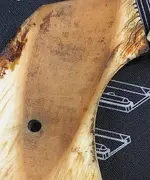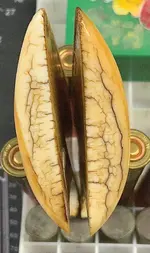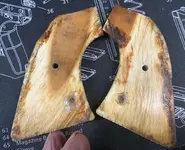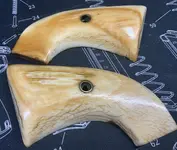Would not the pin test be same in either material?
No. That's why I wrote it will work if you can smell. Having experience with the pin test really helps.
Get the pin red hot. Use pliers or you will get your fingers red hot. Push the pin into the material at an angle. Do this in an inconspicuous place on the object.
Ivory will resist the pin, smell like your tooth under a dentist drill, and will not burn but may leave a small scorch mark that easily buffs out.
Bone will smell like burning flesh, hair or meat, will allow the pin to enter further than ivory, will definitely burn the bone and will leave a burn mark that requires abrasives or a knife to remove the burned spot.
If the piece is man made it will melt when the pin is applied and smell like the plastic it is made of.
I suggest you get a small piece of beef bone, let it dry thoroughly, then try the pin test on the bone and your scales at the same time. If they smell and burn the same you have bone scales. If it doesn't burn or melt you more than likely have ivory.
This test works because ivory is made of enamel and dentine like your teeth, bones although tough have no enamel or dentine and are made of collagen. Both teeth and bones have the mineral apatite as part of their composition but that mineral has no odor and doesn't burn.



